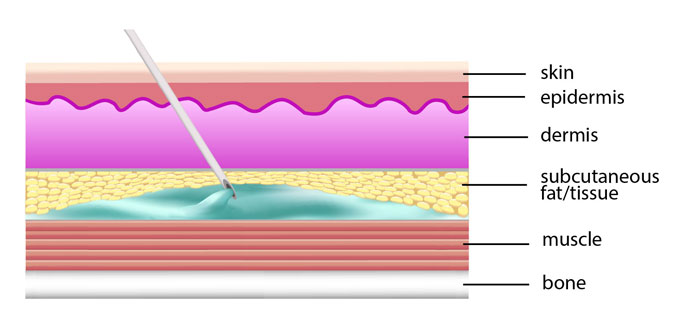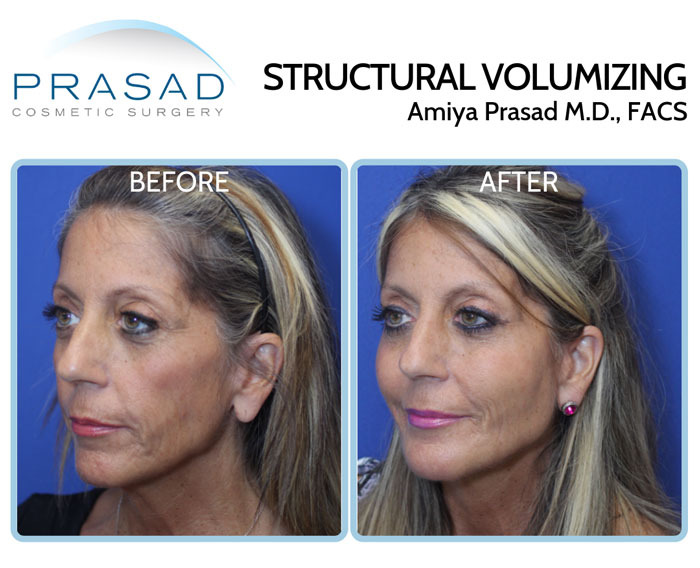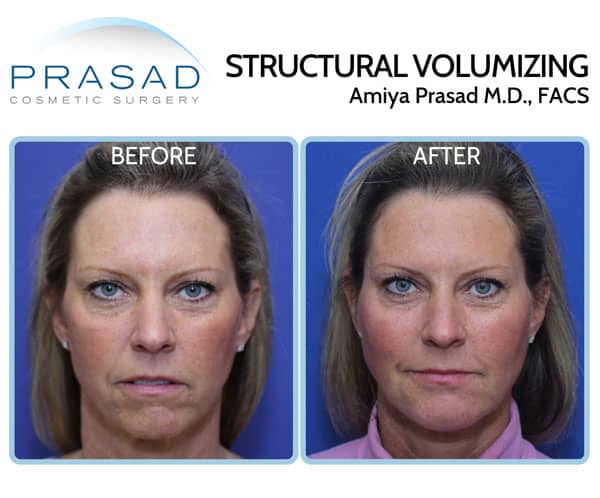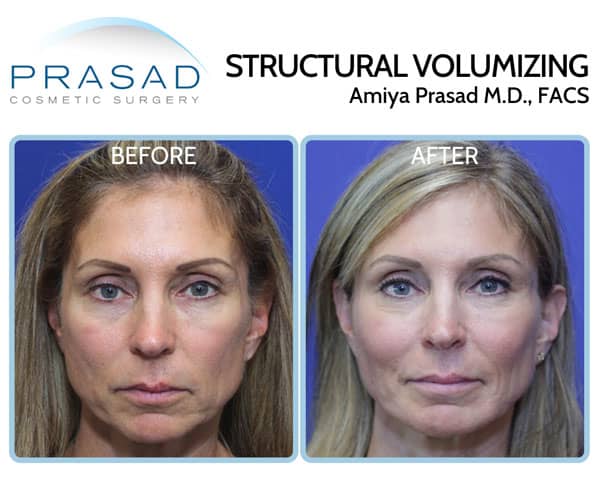What Causes a “Pillow Face” from Fillers, and How to Avoid it

As a cosmetic and reconstructive surgeon with more than 30 years in practice, I’ve seen how facial volume loss is one of the earliest and most noticeable signs of aging. As we age, the appearance of a full, defined face can become flat or sunken due to the loss of volume from bone, muscle, fat, and soft tissue. While cosmetic fillers are a popular solution, I’ve also encountered many patients experiencing an undesired result commonly known as a “pillow face”.
For those wondering, “What is a pillow face?” or “How does a pillow face happen?” which is a bloated or overly soft look like chipmunk cheeks due to commonly practiced techniques of filler placement. I’ll explain the causes of pillow face and how to avoid it while achieving natural, youthful results through expert techniques like Structural Volumizing.
Over the years, I’ve had countless patients come to my office after having facial fillers done elsewhere, complaining about looking soft like a pillow, or doughy. These patients often describe their outcomes as having ‘pillow cheeks’ or experiencing what’s sometimes called “pillow face syndrome.” This happens when fillers are placed superficially in the fat or soft tissue layer, causing the skin to appear bloated or uneven.
Instead of achieving a youthful and defined look, patients are left with an exaggerated appearance. As a surgeon with extensive experience in facial anatomy, I can help correct these issues and restore balance to the face.
What Causes a “Pillow Face”?
One of the most common questions I hear is, “What causes a pillow face?” This overly soft appearance is typically the result of improper filler placement. Many doctors place fillers just below the surface of the skin, or in the fat and soft tissue layer, but these areas lack the structural support needed to maintain a defined shape.


Having worked as a reconstructive surgeon specializing in facial trauma, I understand the importance of precise placement to avoid complications like a pillowy appearance. Advanced techniques in filler placement closer to the bone provides a more natural looking, defined, and structured result.
How I Avoid a Pillow Face
I approach facial rejuvenation from an inside-out approach. By placing resilient, long-lasting fillers directly at the bone level, I create a more defined and youthful appearance without the risk of bloating or puffiness. Patients often ask me, “How do I avoid pillow face with fillers?” or worry about outcomes they’ve seen elsewhere. My knowledge of facial anatomy, combined with techniques developed over decades of performing facial surgeries, ensures precise placement, and natural-looking, and structured results. I apply the same principles I’ve used for facial implants, and reconstructive surgery to create balance and harmony in the face.
How to Get Rid of Pillow Face from Fillers?
If you’ve had fillers done and are unhappy with the result, there are ways to revise a pillowy appearance. The good news is that if the filler used is hyaluronic acid-based, such as those from the Restylane or Juvederm families, it can be reversed with an injectable enzyme called hyaluronidase.
Once the filler is dissolved, I use Structural Volumizing techniques to place filler deeper in the anatomy, closer to the bone. This approach not only eliminates the pillowy look, but also provides a more defined and natural appearance. My extensive background in cosmetic surgery allows me to address these issues effectively, restoring my patients’ confidence.


Conclusion
If your face fillers have gone wrong and left you with a pillow-like appearance, it’s important to know that this can be corrected. With decades of experience as a cosmetic and reconstructive surgeon, I specialize in revising filler complications and restoring natural-looking results.
By dissolving improperly placed fillers, and starting fresh with advanced techniques like Structural Volumizing, I help patients achieve structured, contoured, and youthful results. Remember, it’s not the filler that causes a pillow face, it’s the technique. With the right approach, you can regain confidence and enjoy the benefits of facial rejuvenation.
Dermal Fillers Manhattan, NYC and Long Island, New York
Dr. Amiya Prasad is a Board-certified cosmetic surgeon and a Fellowship-trained oculofacial plastic surgeon. He’s been in practice in Manhattan and Long Island for over 30 years. In addition to performing all types of facial surgical procedures such as facelifts and eyelifts, Dr. Prasad performs non-surgical facial volume enhancement procedures every day in his practice.
If you’re interested in recommendations for your individual situation, fill the form below, or contact any of our offices: (212) 265-8877 for Manhattan, (516) 742-4636 for Garden City, Long Island, or (703) 356-1336 for Vienna, Virginia to schedule a consultation.
FAQ Section
“Pillow face” is a term used to describe an overly soft or bloated facial appearance caused by improper placement of fillers. As an experienced facial cosmetic surgeon, I’ve treated cases of pillow face to restore a natural, balanced look.
Botox itself does not cause a pillow face. However, when combined with filler, improper placement, or overuse of either treatment can result in an unnatural appearance. With my experience in injectable treatments, I ensure all procedures are done with precision.
While hyaluronic acid fillers can be dissolved if someone has a pillowy appearance, the effects of Botox on facial muscles cannot be immediately reversed, but the effects do wear off with time, usually starting about 4 months after treatment, and completely wearing off in 6 months.
Fixing pillow face starts with dissolving improperly placed fillers using hyaluronidase. Afterward, I use advanced techniques like Structural Volumizing to achieve a more natural, structured, and defined result.
The key to avoiding a pillow face is choosing an experienced provider who understands facial anatomy. As someone who has trained other doctors and performed thousands of facial procedures, I prioritize naturally appearing, proportionately balanced outcomes.

